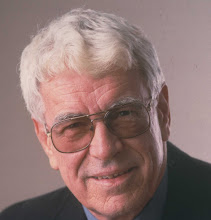The little bat, who is never named, starts out spending his summer days sleeping under the porch roof with all the other bats. But then, in late summer, the other bats move into the barn, and the little one stays alone at the porch. He doesn’t really know why, and he feels lonely.
Still, he keeps on making poems about all the things he sees, and eventually he gets up the courage to try one on the mockingbird – a chilling poem about an owl. “The ear that listens to the owl believes in death,” says the bat.
The owl goes back and forth inside the night,
And the night holds its breath.
The mockingbird thinks the poem is very clever, and technically “quite accomplished.”
The bat is pleased at the mockingbird’s approval, but also dismayed that the mockingbird doesn’t seem to feel the terror that inhabits the poem. And then he reads it to a chipmunk, who “gave a big shiver and said, ‘It’s terrible, just terrible! Is there really something like that at night?” Oh, yes, the bat assures him. So the chipmunk nervously resolves to go to bed earlier, and never to forage after dark, and to dig himself a lot more holes.
At last the bat has his audience. Now he makes up poems about the chipmunk, who is thrilled, and the mockingbird, who becomes quite defensive. He finds that some subjects – like the cardinal – simply will not generate poems, and he doesn’t know why.
Just before the two little furry companions go off to their separate winter sleeps, the bat composes an absolutely stunning poem about bats. A baby bat clings to its mother, who “dances through the night/Doubling and looping, soaring, somersaulting” and emitting “high sharp cries/Like shining needlepoints of sound.” As she flies, her baby “drinks the milk she makes him/In moonlight or starlight, in mid-air”while “their single shadow” is “printed on the moon.”
The story is charming, the characters sharp and distinctive, and the poems hang in the narrative like jewels. It’s not easy being a poet; as the bat poet reflects, “The trouble isn’t making poems, the trouble’s finding somebody that will listen to them.”
But the poems impel his true reader, the chipmunk, to see the world in a new way, understand things he had never known about, open up puzzling vistas of feeling. The poem about the owl, says the chipmunk, “makes me shiver. Why do I like it if it makes me shiver?”
Well, that’s what poets do – and so do painters, musicians, dancers, actors. That’s what artists do. And sometimes that sharpness of perception, that remorseless clarity of vision, is more than the artist can actually bear.
Jarrell himself was a superb poet and critic, but he was also a deeply troubled man. He was killed by a car in 1965, while he was walking along a roadside in
But he left some dazzling writing behind him, and not the least of his achievements is this piercing and sinewy volume, so full of wisdom and beauty. And it will be waiting for me, like a friend, when I need it again.

2 comments:
Nice piece, Don. Something else we agree on. I don't know whether you know my piece on it?
http://www.stu.ca/~hunt/batpoet.htm
Don, this made me want to read more by the author! Reminds me of Wilde's The Happy Prince, who asks his little bird friend to fly over the city "and tell me what you see there".
Post a Comment